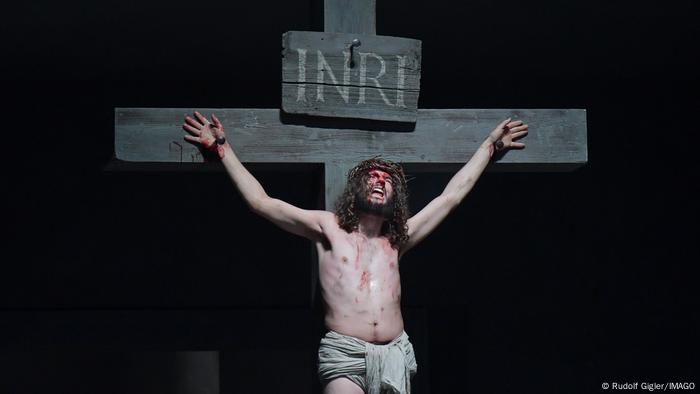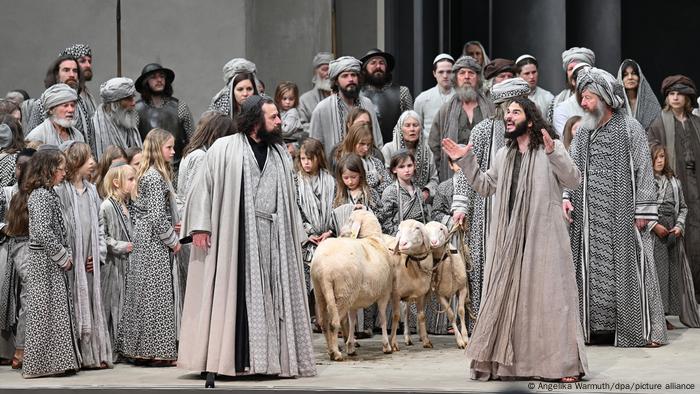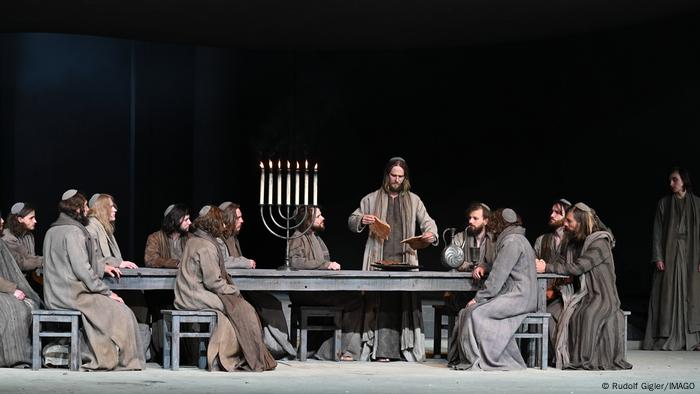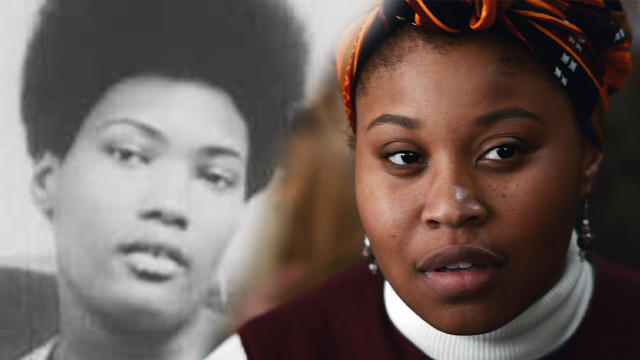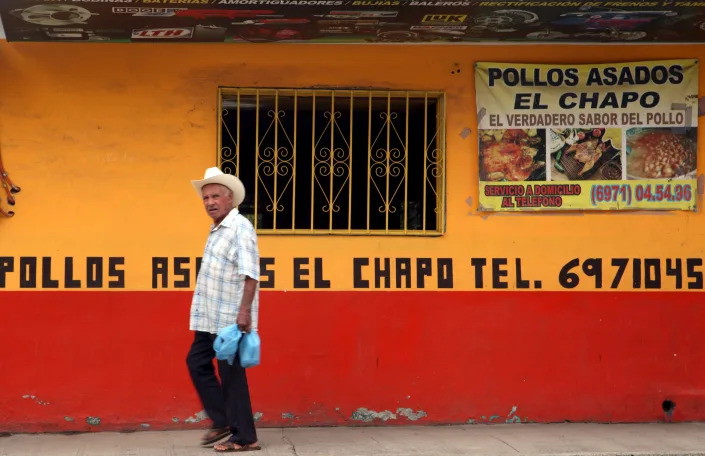“Judas and the Black Messiah” is the story of Fred Hampton’s assassination by the Chicago police in 1969. Co-written by Will Berson, a Jew, and Shaka King, an African-American, it unites a team that worked together in the past on featherweight TV comedies. In addition to co-authorship of the screenplay, King served as director.
They have made a well-researched, by-the-numbers biopic that will help many young people understand the depravity of the FBI, just as Aaron Sorkin’s “Trial of the Chicago 7” helped expose the city’s cops and judicial system. Unlike Sorkin, Berson and King did not twist the story to suit their own political agenda. However, by relying on the unfortunate mythology that has arisen around the Black Panther Party in the past half-century, some further analysis will be necessary for a deeper understanding of the period and how the ruling class was able to murder a promising young leader.
As should not come as a big surprise, this unheralded, debut film had major players bootstrapping it. Ryan Coogler, the black director of “Black Panther”, was one benefactor. His Panthers were not activists but African demigods originating in Marvel Comic books that unaccountably was hailed by Jamelle Bouie as “the most political movie ever produced by Marvel Studios”. As producer, he raised millions as did Charles D. King, a black former super-agent who founded MACRO Media so that such films could be made (he is no relation to the director.)
Apparently, Shaka King was thinking big when he decided to make his first feature film. He hoped to make our era’s version of “Battle of Algiers”. As I will try to explain in my political analysis that follows, it is doubtful that he has the kind of Marxist politics that served Pontecorvo so well. Nor did he have Pontecorvo’s cinematic genius. The 1950s and 60s were years in which Marxism exercised a major influence over European filmmaking. Those days are long gone.
Berson and King made a major mistake in analogizing an FBI undercover asset with Judas Iscariot, who was not only a disciple of Jesus Christ but one of the twelve original Apostles.
By contrast, Bill O’Neal was a shadowy and nondescript snitch who like most FBI plants did it for the money and to avoid being sent to prison for a previous offense. Like most of the agent-provocateurs that the FBI and red squads implanted in mosques, O’Neal was a grubby opportunist. But unlike the cases in which feckless, observant Muslims were talked into terrorist stings by the FBI, Fred Hampton was supposedly no babe in the woods. Why would he ever have allowed someone with a dicey past like O’Neal ensure his safety, especially since he was not as politically committed as the average Panther? When Hampton becomes suspicious of O’Neal’s claim of being a car thief, he forces him at gunpoint to hotwire his stolen car to prove his bona fides. When he passes the test, Hampton is assuaged. If this was the kind of acid test new members had to pass rather than understanding Panther politics, Berson and King unwittingly revealed how inexperienced this group really was. And perhaps their own inexperience with the period.
In every scene, O’Neal comes across as a man with no particular qualms about being a Judas. He only seeks to cut his ties to the FBI when it becomes clear that he might be picked off by a cop in the gun battles that were bound to ensue in a period of rising violence between an angry Black community and the class enemy. In a scene close to the conclusion, O’Neal barely dodges a bullet during a shootout that ends with Panther HQ being torched.
By contrast, the Jesse James films were more dramatic because Robert Ford, the “dirty coward who killed Mr. Howard (James’s assumed name)” of folk-song fame, was continuously wracked by feelings of guilt for betraying his fellow outlaw. Playing Ford in the 1949 “I Shot Jesse James”, John Ireland was nonpareil. The filmmakers failure to invest more in this character, even if fictionally, robbed it of its possible power. Why not have O’Neal become swept up in the revolutionary fervor surrounding him, like Patty Hearst and the Symbionese Liberation Army while still being coerced to be a snitch? By the standards of anti-heroes going back to the New Testament, O’Neal was not nearly Judas enough. Jejune was more like it.
Given the intense drama that surrounded Hampton’s assassination, it is unfortunate that Belson and King sought to embellish it with staged confrontations that had more in common with cheap action movies than real life. Hampton had the political acumen to create a de facto united front with various outsider groups in Chicago that, like the Panthers, had collided with the cops. In an amalgam of youth gangs won to the side of left politics, they create a group called the Crowns that has a summit meeting with the Panthers in a capacious auditorium that looks like nothing you’d expect to see in a Chicago slum. Dozens of Crowns are armed with automatic rifles and shotguns that we’d expect to be used against the Panthers if Hampton missteps. Fortunately for him, he makes the case for revolutionary action and is rewarded with an automatic rifle by the Crown’s leader. None of this seems plausible. It would have worked far better if the melodrama had been abandoned and the politics amplified.
Ditto for a showdown between Hampton and the Young Patriots, a group of poor white men and women who flocked to Chicago from the South to escape poverty, just like blacks. The scene opens with the Patriots sitting at a table beneath a huge Confederate flag, giving an audience unfamiliar with such meetings the impression that Hampton was risking his life by meeting with KKK types. In reality, the Patriot leaders had a background as community organizers with Jobs or Income Now (JOIN). This group grew out of Students for a Democratic Society efforts to organize the neighborhood where poor southerners lived. As co-founders of the Young Patriots, Jack “Junebug” Boykin and Doug Youngblood had been involved with JOIN. If I had a hand in writing “Judas and the Black Messiah”, I would have dropped the Judas part and expanded such characters and even created a buddy relationship between Hampton and Boykin. That would have been far more politically relevant than themes of betrayal and subterfuge.
Having said all this, I still recommend the film since it will be of obvious benefit to young people trying to understand the tumultuous sixties. As someone deeply immersed in activism fifty years ago when news of Hampton being killed and other assaults on the Panthers were part of my daily intake, I have a different analysis of their legacy.
“Judas and the Black Messiah” errs much too far in the direction of hagiography. You never get the sense that the young filmmakers have a deeper understanding of their failure or even more importantly a critical approach to their major success: the free breakfast program and other elements of their “survival” turn such as medical clinics. Surely it was a major breakthrough in serving breakfasts to 20,000 children per day at its height. Supposedly the program was something that kept J. Edgar Hoover up at night and thus led to Cointelpro and the death squads that would lead to Hampton’s murder in December 1969.
The free breakfasts were inspired by the Maoist “serve the people” ideas that flourished on the left in the 60s and 70s. For the mostly white groups led by Bob Avakian and Mike Klonsky, it was interpreted mainly as a paternalistic approach to organizing with their cadre going into working class areas like missionaries for socialism.
At least with Avakian et al, the “serve the people” notion was an element of a strategy meant to challenge the capitalist state. So, for example, the Maoists went into coal-mining regions with the goal of strengthening the leftwing of the UMW. But for the Panthers, there was nothing like this at work in the breakfast program. To some extent, it was simply a turn away from the gun-toting adventures that had begun to decimate their ranks. How could you send the cops against a group making breakfasts for poor Black children? That was the idea anyhow.
Unfortunately for the Panthers, they never dropped the stupid rhetoric about offing the pig that continued as the breakfasts were being served. If you were reading their paper, as I was in this period, you could not help but be appalled by pictures such as this:

This ultraleft image of a gun being trained on a pig was very much a product of the times just as the Weathermen’s tone-deaf “kill the rich” rhetoric that ultimately evolved into outright terrorism. In either case, bold imagery and words were meant to distinguish the “revolutionaries” from ordinary society that lagged behind their advanced consciousness.
The obsession with guns and bombs obviously was connected to the Vietnam war and the Cuban guerrilla initiatives that gave many—including me—the sense that American imperialism was surrounded by revolutionary forces closing in. To some extent this led to the feeling that emulating the NLF or Che Guevara’s fighters meant breaking with bourgeois society and showing solidarity with foreign fighters by breaking the law. It was ironic that for the Panthers this meant simultaneously carrying out an armed struggle at some point and engaging in free breakfast meliorism.
One of the faintly remembered events that had the same kind of cinematic intensity was the shootout between Eldridge Cleaver, Bobby Hutton and other Panthers on one side and the Oakland cops that took place on April 6, 1968. Cleaver had become a leader of a faction in the Panthers that was dubious about the breakfast program and sought to “bring it on” as urban guerrillas. In any armed confrontation between a tiny group with thin support in the Black community and the cops, the revolutionaries were likely to end up on the losing side. Apparently, Cleaver embarked on this adventure as a response to the assassination of Martin Luther King Jr. two days earlier.
In essence, this convergence of events symbolized the inability of the Panthers to understand what King was about and their failure to develop a program that might be modeled on what King was doing in Memphis—a working class mass action that threatened racist and capitalist power to such an extent that it cost him his life.
Unlike King, who went to Memphis to build solidarity for striking garbage men, neither Cleaver nor Huey Newton saw their role as building a working class movement. They oriented to lumpen elements in the Black community, something that always struck me as perhaps being inspired by “The Battle of Algiers” with its main character Ali Le Pointe abandoning a life of petty crime to join the FLN. In essence, Berson and King made a film about men and women who lacked the mass base of the FLN. Pontecorvo’s Marxism enabled him to build a foundation based on the class struggle rather than analogies with Judas Iscariot.
What an opportunity was lost for a Black revolutionary movement to focus on organizing Black workers. Keep in mind that this was before the phenomenon of runaway plants and when Detroit et al were still thriving industrial centers. Auto, steel, rubber, oil, etc. were still profitable industries with very large—if not majority—African-American workforces. These were workers who were open to radical ideas as the Black caucuses in the UAW would indicate.
If the Panthers had built a movement in the ranks of the Black working class, it might have become a powerful deterrent to the runaway shops that have devastated black America.
Although I could be wrong, it strikes me that Black nationalism will never undergo a revival. Black youth today who oppose police brutality are inspired much more by Martin Luther King Jr. than the Panthers. That being said, I still hold out hope that some day there will be a real engagement with Malcolm X’s ideas that while being Black nationalist were evolving toward working class internationalism. That, of course, is what probably got him killed just as it got Martin Luther King Jr. killed.















